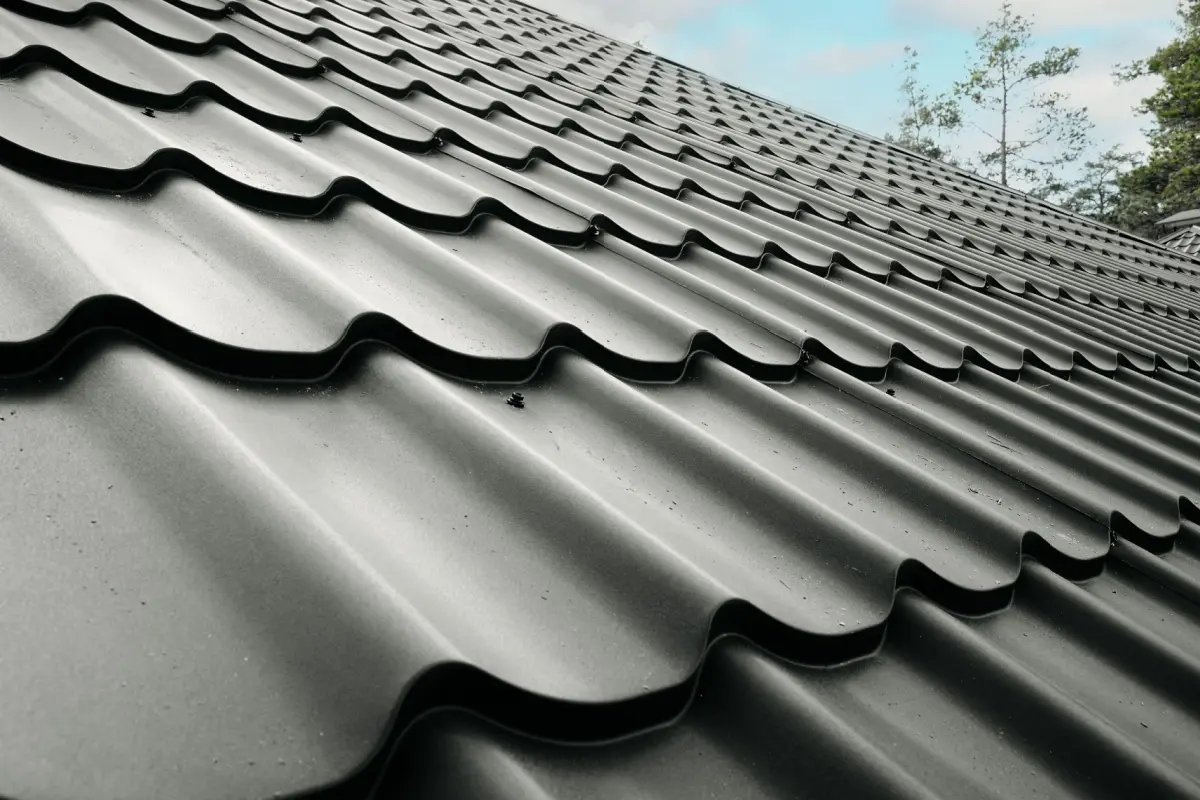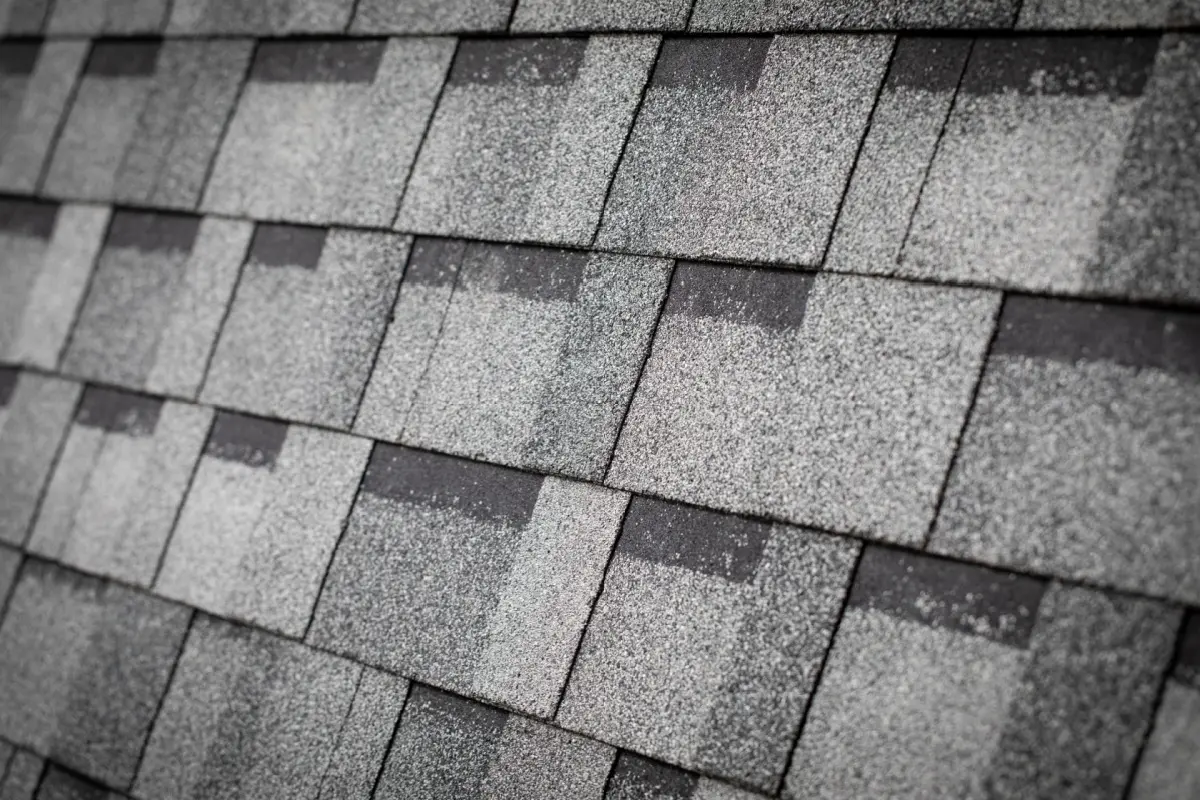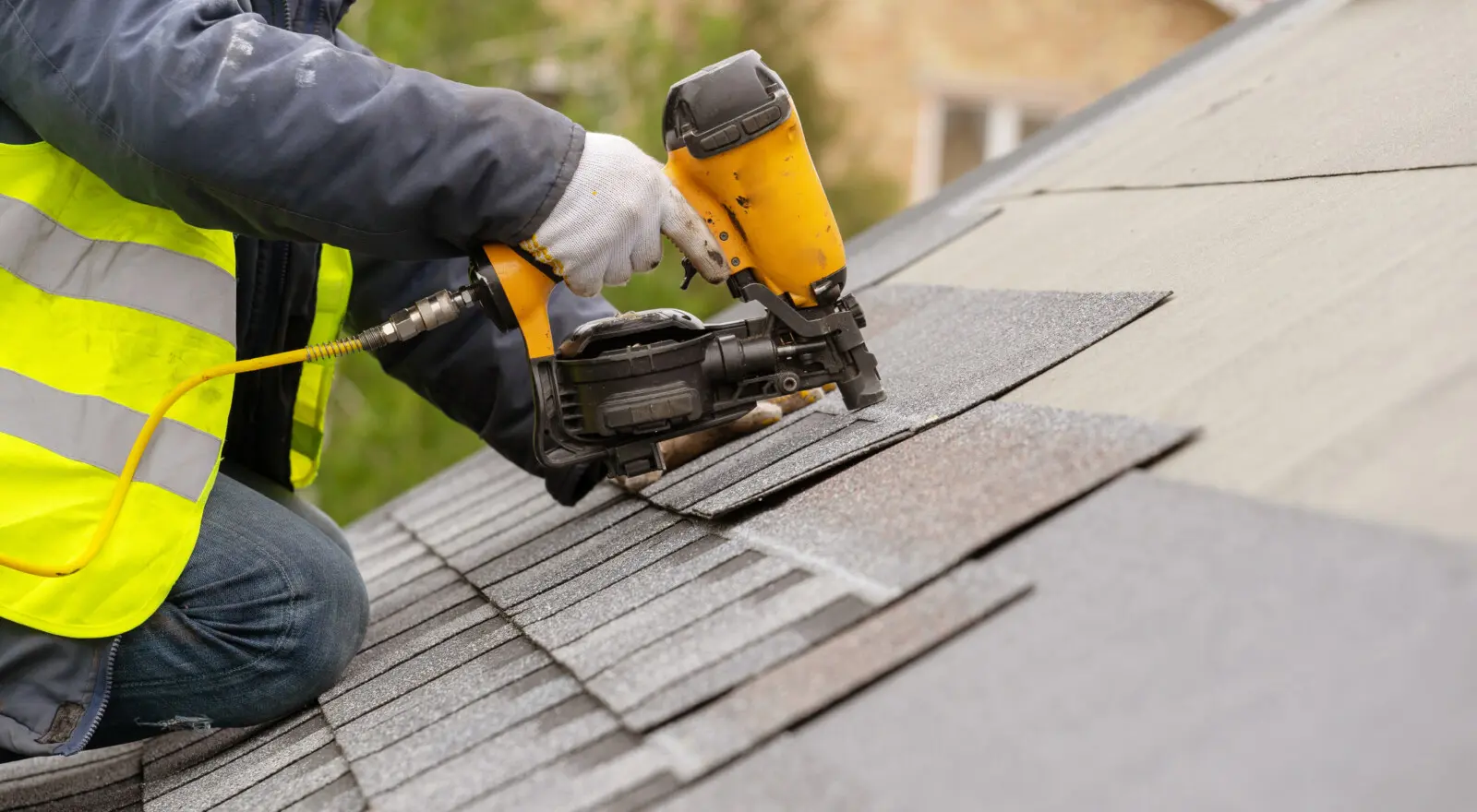Want to know the difference between a metal roof and shingles? Let’s get into it.
When it comes to your roof, the material you choose influences more than just curb appeal. It also plays a significant role in energy efficiency, long-term maintenance, resale value, and how well your roof withstands harsh weather. If you’re deciding between metal roofs and shingles, this guide will walk you through the differences of these materials so you can make the right call for your home.
A metal roof is a roofing system made from panels or shingles constructed of materials like steel, aluminum, copper, or zinc. They are built to lock tightly together, which helps them resist wind and water. The key advantages of a metal roof vs shingles are its durability, lightweight design, and high resistance to fire, mildew, insects, and rot.
The most common types of metal roofing are:

Asphalt shingles are roofing materials made from a fiberglass or organic base topped with asphalt and ceramic granules. They’re the most common roofing material in the United States due to their affordability and ease of installation.
There are three main types of asphalt shingles:
There are many roof types for your home available in today’s market. Most homeowners take cost into consideration when deciding which one to choose, so let’s see how metal roofs and shingles stack up.
At first glance, asphalt shingles appear to be less expensive. Installed, they range from $4.50 to $12.25 per square foot. Metal roofs, by comparison, are more expensive. Steel or aluminum panels typically cost $7 to $15 per square foot installed, while premium copper or zinc can range from $15 to $29 per square foot installed.
When you calculate how much a metal roof costs compared to a shingle roof, a metal roof usually ends up costing more to install. However, the entire cost extends beyond the installation price tag, and long-term value can significantly shift the equation.
Metal roofs last longer and are more energy efficient, which can lower long-term costs. If you plan to stay in your home for decades, the higher upfront price may balance out or even save you money in the long run.

If sticker shock is an issue, many homeowners consider roof financing to spread out the installation payments, especially when opting for more expensive metal panels.
Lifespan is one of the most significant differences between metal roofs and asphalt shingles. A metal roof can last anywhere from 40 to 70 years, depending on the material and finish.
Standard asphalt shingles, on the other hand, last 15 to 30 years, depending on quality and local climate conditions. Upgraded architectural varieties can last up to 40 years with proper ventilation and suitable climate conditions.
Shingles also tend to wear out faster in areas with heat, intense sun exposure, or poor attic ventilation. So if you’re thinking long-term, metal often comes out ahead.
Your roof plays a bigger role in your energy bill than you think. The material you choose can impact how cool your home stays in the summer and warm in the winter.
Metal roofs are known for their energy-saving properties, especially in warm climates.
Shingles tend to absorb heat, which affects indoor temperatures.
Regardless of the roofing material you choose, regular maintenance goes a long way in keeping your home protected. Calling a professional at the first sign of a water leak in the ceiling can save thousands in future repairs.

That said, the type of roof you have can affect how often you’ll need to check in and what kind of work might be required.
Metal roofs are durable and relatively low maintenance.
Asphalt shingles roof repair generally requires more hands-on care, especially after storms or heavy weather.
The weather in your area has a significant impact on the lifespan of your roof and its ability to protect your home. Let’s examine how each option performs in various climates.
Metal roofs are built to handle a wide range of weather conditions.
Shingles are suitable for most climates but may require additional support in extreme weather conditions.
Our metal vs shingles comparison chart highlights the differences between the two materials. You can use it to evaluate them feature by feature to see which one fits your needs.
| Feature | Metal Roof | Asphalt Shingles |
| Lifespan | 40 to 70 years | 15 to 30 years |
| Upfront Cost | Higher | Lower |
| Long-Term Value | Higher | Moderate |
| Energy Efficiency | Excellent | Moderate |
| Appearance Options | Modern, sleek, textured | Traditional, dimensional |
| Installation Time | Longer | Faster |
| Noise in Rain | Can be loud without proper insulation | Quieter |
| Repairs | Less frequent, higher cost | More frequent, lower cost |
| Fire Resistance | Very high | Varies by product |
| Weather durability | Excellent | Good |
Still on the fence? Ask yourself:
Metal roofs and asphalt shingles both have their benefits, but serve different priorities. If you want durability, long-term savings, and top-notch energy performance, opt for metal. Stick with shingles if you need a faster, more budget-friendly solution with good protection.
Ultimately, the best choice is the one that suits your home, climate, and budget today and remains viable 10 to 20 years from now.
Often, yes. Buyers tend to see metal roofs as a long-term investment since they can last for decades. It also signals energy efficiency and low maintenance.
Yes, if local building codes allow and your current roof is in good shape. This can save on labor and disposal costs. However, it requires ensuring the structure can withstand the added weight and that moisture barriers are correctly installed.
It can, if there’s no attic insulation or underlayment. But most modern installations include sound-deadening materials, making them no noisier than a shingle roof.
If you live in a hot climate, metal roofs are a good choice due to their reflective properties. In cold climates, both options work well if installed correctly, but metal is better at shedding snow.